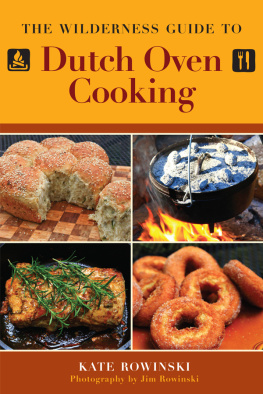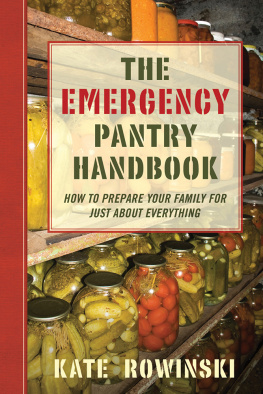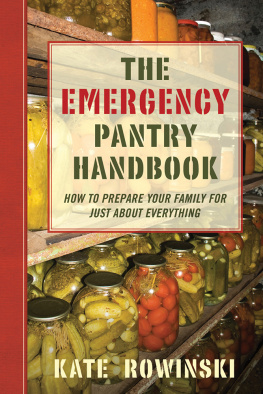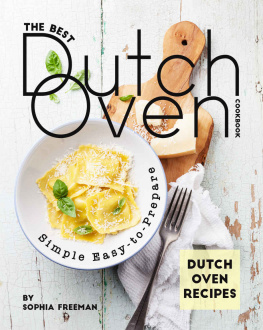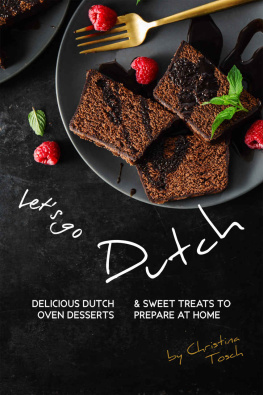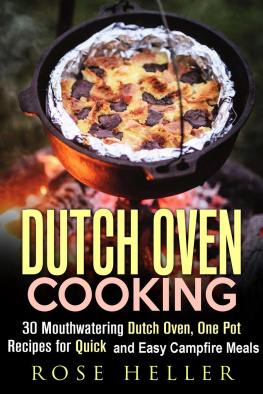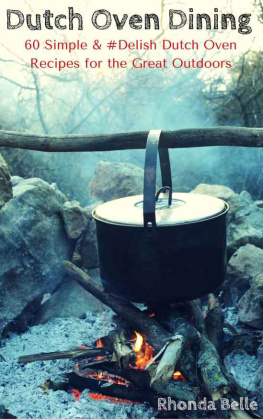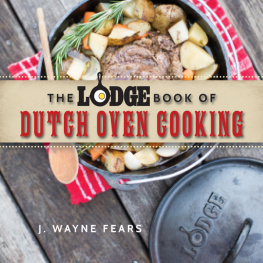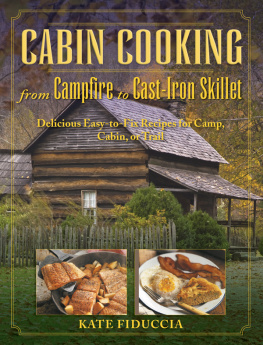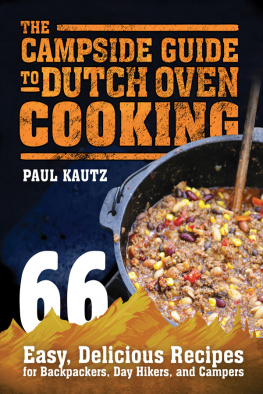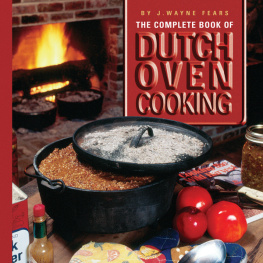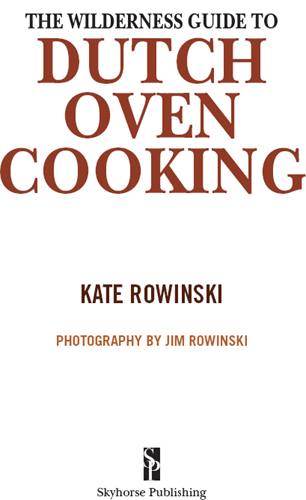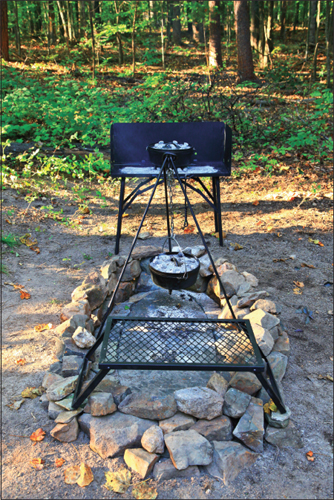Copyright 2012 by Kate Rowinski
Photographs copyright 2012 by Jim Rowinski
All Rights Reserved. No part of this book may be reproduced in any manner without the express written consent of the publisher, except in the case of brief excerpts in critical reviews or articles. All inquiries should be addressed to Skyhorse Publishing, 307 West 36th Street, 11th Floor, New York, NY 10018.
Skyhorse Publishing books may be purchased in bulk at special discounts for sales promotion, corporate gifts, fund-raising, or educational purposes. Special editions can also be created to specifications. For details, contact the Special Sales Department, Skyhorse Publishing, 307 West 36th Street, 11th Floor, New York, NY 10018 or info@skyhorsepublishing.com.
Skyhorse and Skyhorse Publishing are registered trademarks of Skyhorse Publishing, Inc., a Delaware corporation.
www.skyhorsepublishing.com
10 9 8 7 6 5 4 3 2 1
Library of Congress Cataloging-in-Publication Data is available on file.
ISBN: 978-1-61608-649-7
Printed in China
Contents
Introduction
I am not sure there was ever a day in my entire childhood when I did not come home to my moms Dutch oven simmering on the stove or in the oven. She had a collection of ovens, some flat-bottomed, others made for camp with their three squat little legs. Moms entire cooking repertoire revolved around the Dutch oven, whether we were at camp on the Louisiana bayou, on a fishing trip in northern Wisconsin, or just having a weeknight dinner at home. Mom grew up in Louisiana, in the heart of Cajun country. Louisiana cooks are at their best outdoors; they just seem to have a knack for gathering together good ingredients, good fun, and good people to turn every meal into an event.
When I met my husband, he came with a collection of cast iron, too. He had a number of different skillet sizes that he carried in his Ford camper. He used them for searing trout, cooking up a batch of fried potatoes, or frying up ham and eggs. While the Dutch oven was not part of his culinary repertoire, he certainly had a touch for getting the coals just right for frying up quick meals.
My husband proposed to me after a campfire meal. We had made a long, hard paddle up the Brule River in northern Wisconsin on a late fall day that had more than a hint of snow in the air. It was not a good day for fishing, but Jim was in the mood for an adventure. We cast into the cold air, neither of us believing that a trout would present itself on such a day.
The paddling was difficult against the strong current and I was losing my patience as we struggled to negotiate a particularly difficult passage. As we rounded a bend, Jim hopped out of the canoe and pulled us to shore. We built a fire on a small point jutting out into the river. Jim stripped off his wet pants and socks, wrapping a plaid wool blanket around his waist. As I arranged his wet clothes near the fire, he surprised me by pulling out a picnic luncheon: a giant slice of ham, potatoes for frying, and two large apples. We set the iron skillet on the fire to heat and he pulled out a bottle of wine and two real glass goblets. We shared it laughing, aware that the day and the conditions were much better suited to a warm cup of cider and a little bourbon. But we drank it anyway, and it made the perfect accompaniment to the salty ham, crisp potatoes, and fried apples.
After lunch, he climbed onto a large branch overlooking the river. He said he wanted to look for fish, but he soon asked me to join him. Exasperated and a little too cold for comfort, I reluctantly climbed onto the branch with him, looking down at the water to see what was capturing his attention. But when I reached him, I realized he wasnt looking at the water at all. He was holding out a ring. I will never forget the sight of that impossibly young man, swathed in his makeshift wool plaid kilt, holding out the promise of an adventurous future.
That day was the perfect indicator of what our life would be together. Upstream struggles and cold, fishless days, warm fires, good food, fresh air, and rushing riversand a dash of adventure in everything we would do. I cant fry a ham steak or make a fry-up of potatoes without thinking of that day. Every image, every memory, is captured in the ingredients of a shared meal. For me, thats what outdoor cooking is all about.

I added my first Dutch oven to our set of cookware, and over the years, we learned to make every sort of meal in every kind of condition. After we graduated from college, we set off in our retrofitted VW bus to explore the country. We cooked roasted chicken on hot, steamy days in the Shenandoah Mountains and made venison chili when we portaged the Boundary Waters Canoe Area. We set up elaborate chicken pot pie picnics next to trout streams and made long, elaborate roast beef dinners after sunset in Yellowstone Park. We had outdoor Christmas celebrations over campfires with steaming lamb stew and celebrated birthdays in the middle of the forest with apple gingerbread birthday cake baking in the Dutch oven.
As our family grew, so did our outdoor kitchen, expanding from three skillets and a Dutch oven to a half-dozen skillets, four Dutch ovens, a cooking table, and an ever-expanding pantry of traveling supplies and utensils. We couldnt wait to get out the door to go campingour menu plans often overshadowing the plans for fishing or hiking.
When we bought our home in Virginia, we finally had room to set up a proper outdoor cooking area. Today this is where we most often grill, fry turkeys, and build the fires for heating our Dutch ovens. Our fire pit is a great place for the family to gather, whether over a pot of stew or roasted mussels, or just with beers and marshmallows for the kids.
After my mom died, I was fortunate enough to inherit her Dutch ovens. I have a special fondness for one in particular, a flat-bottomed oven that I use for simmering stews or frying chicken at home. It evokes all the goodness of childhood, and I am reminded of every recipe that ever passed through it. The pan itself bears witness to those days, with a rich patina of hard-earned seasoning that remains as good today as it ever was in my mothers day.
For me, Dutch oven cooking is not about the recipes, although I have many. It is not about the techniques, although I have worked hard to master them. For me, Dutch oven cooking is about cooking in beautiful places, creating meals with wonderful people, and sharing the warmth of the soft, dying embers as they signal the end of the day.
Enjoy.
CHAPTER
The Basics of Dutch Oven Cooking
T he term Dutch oven is used to describe any heavy-duty pot with a tight-fitting lid that is used for long, slow cooking. Dutch ovens are made in many configurations, from elegant enameled ovens used in the kitchen oven to heavy flat-bottom ovens designed for stovetops.
For the purpose of camp cooking, the Dutch oven (often referred to as the camp Dutch oven) is a heavy cast-iron pot with a tight-fitting lid and three small legs. This type of oven is designed specifically for cooking over an open heat source. There are also Dutch ovens designed for outdoor use made of heavy aluminum. They are easier to transport, but have somewhat different heating properties than cast iron.

